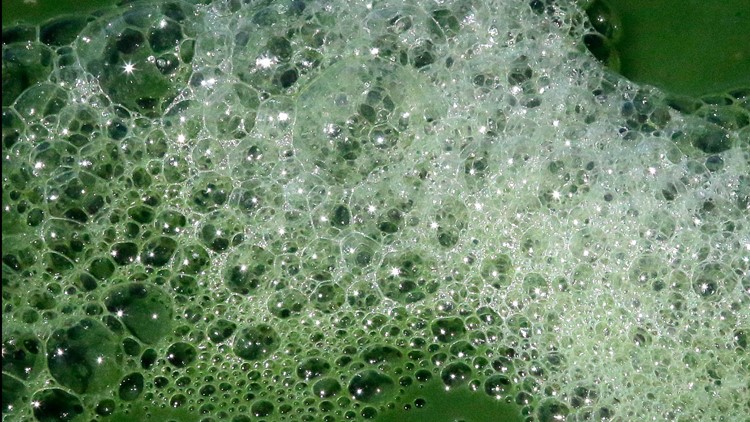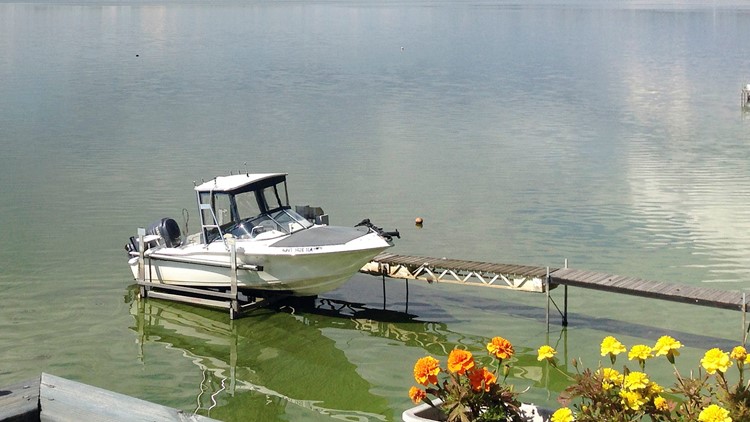ATLANTA — A Marietta couple shared the heartbreaking story of their dog Arya’s death over the weekend, a lazy Saturday at the lake turned tragic within a matter of hours.
Meanwhile, on Friday three dogs all belonging to the same owner died in North Carolina after swimming in a pond.
The link between the two appears to be a blue-green algae that’s highly toxic to dogs - it can kill a pup as fast as 15 minutes after getting into their systems.
"We took our sweet Arya to the lake and had the best day playing ball and swimming around! About 30 minutes later on the drive home, we noticed her making weird noises ..." Morgan Fleming wrote on Facebook.
The border collie died shortly after she began vomiting in the car.
Blue-green algae: What it looks like
Here are some important things to know about blue-green algae:
- It’s actually a bacteria: The bacteria is called cyanobacteria and when it spreads in a body of water it can produce a blue-green color in the water or the kind of thick, green layer that has the appearance of “pea soup.”
- It’s most common in non-flowing freshwater: Think ponds and lakes, rather than rivers and creeks. But remember, rivers and creeks can also often sit still and give rise to the algae.
- It’s also common down South: According to VCA Hospitals, blue-green algae flourishes most where the climate is hot and humid and water is warm. That describes basically every corner of the Southeast in the summer.
- It’s difficult to tell it’s there: Dr. Mark Aubel of Greenwater Laboratories told 11Alive “your typical layperson will not be able to tell one algae from another, or a good from a bad” and that if you see any algae, it’s best to play it safe with your pup.
- There are, however, warning signs: The “blooms” tend to clump together near the surface water and could be anywhere from bright green to brownish. In general, if parts of the water appear to be thick and mucky, there’s a chance it’s because of blue-green algae.
- It’s highly toxic to dogs and other animals: The more obvious symptoms include sudden vomiting, diarrhea and seizures. Dogs who’ve ingested the algae will also likely appear weak and disoriented, and probably will have difficulty breathing.
- It eventually causes liver poisoning: Blue-green algae attacks a dog’s liver and causes it to shut down, which is usually the ultimate cause of death in these cases. The Marietta couple did not have an autopsy performed, but that their dog’s symptoms and how rapidly they progressed were consistent with algae poisoning. In North Carolina, the three dogs died of liver failure, according to their vet.
- It’s very difficult to treat: There’s no known antidote to the toxins, so typically the only chance you have is to get to a vet who can flush the toxins quickly, usually by induced vomiting. But chances with that are still slim. “Regardless of species, the toxins enter the system so quickly that the animal is usually sick before reaching medical care,” VCA Hospitals says. “It is often too late to remove the toxin.”
- The only sure thing is to avoid algae entirely: All the experts agree – if there’s algae present, or it even seems like algae might be present, don’t take the risk.
MORE ANIMAL HEADLINES









